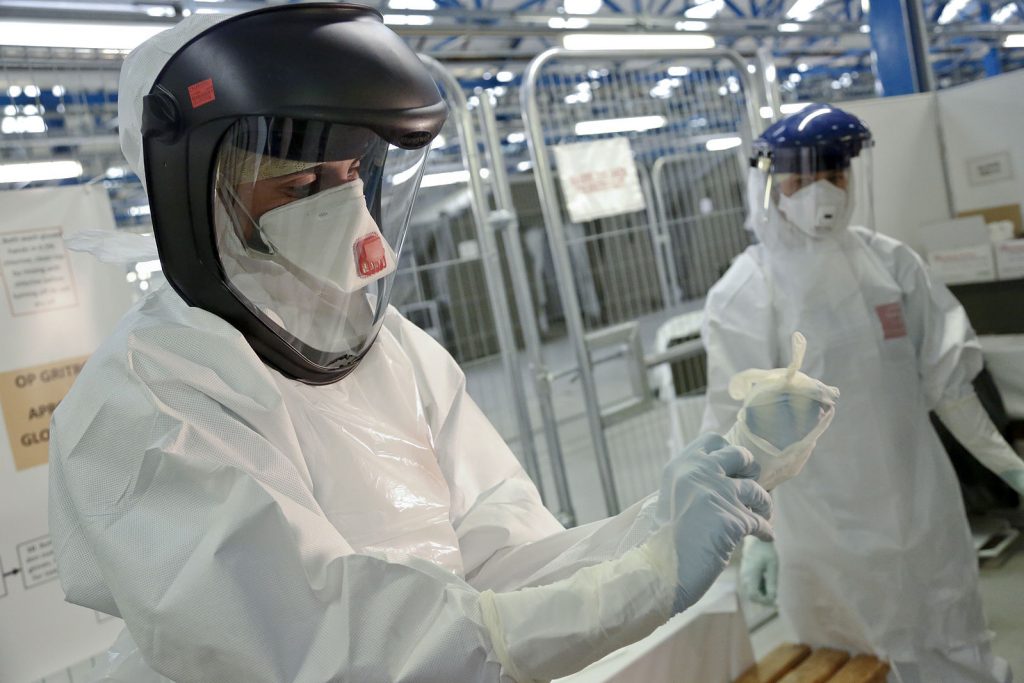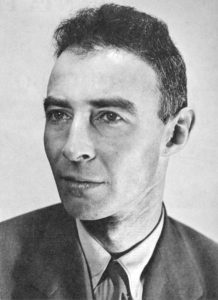Nurse Nina Pham arrived at Texas Presbyterian Hospital in Dallas for her regular shift. The patient that she was assigned to take care of was named Thomas Duncan. Little did she know that this patient would change her life, but not particularly for the better. A few days after Nina met her patient Duncan, she woke up sick. She knew in her heart that she had been contaminated somehow. She was later diagnosed with having the Ebola virus. That day started a long battle for Pham, fighting for her life.

Nina Pham and few other nurses were assigned to take care of Duncan in his most critical state. Nina Pham was his primary nurse, but she was given little information about what disease Duncan was carrying. Nina Pham claims that she lacked the complete training that she needed in order to protect herself. The CDC states that people who care for patients who are suffering from Ebola should have completed comprehensive training on how to protect themselves. According to Dr. Daniel Varga, the chief clinical officer at Texas Presbyterian Hospital, Nina Pham and the other nurses assigned did follow the CDC guidelines for protecting themselves. It is unknown when she came into contact with the disease, but according to Nina Pham, the hospital did not provide everything that it could have to ensure that the nurses were safe. Dr. Varga admitted that the hospital did not have all the resources available at the time and lacked communication, but they still followed the CDC and the state guidelines. By the time Thomas Duncan was moved to the ICU, the nurses began wearing double sets of gloves that were then taped to two gowns. Then they wore two booties and a face shield. Nina Pham claimed that though they were pretty much covered, their necks were still exposed. According to Pham, the nurses were the ones who came up with an arrangement that they felt would better protect themselves. The nurses would use the room next door to place their suits and to clean up after taking care of Duncan. As Duncan got progressively worse, the janitors stopped coming into the room. According to Pham and the three other nurses, they began to work as both janitors and nurses at the same time. They had to clean his bathroom and his room, which made them come into direct contact with his lethal waste. Nina Pham stated that there was so much waste at one point that it could have probably filled half of a patient’s room. It was emotionally and physically draining for the nurses.6 Then, when Duncan died, it left the nurses devastated. It was hard for Nina to lose Duncan, but soon she would be in the same position as him.
Three days later, after Thomas Duncan died, Nina Pham checked herself into the hospital, because she was experiencing a high fever. When she was admitted, she explained who she had taken care of, and what her condition probably was. She was quickly tested for Ebola and indeed tested positive for the disease. The hospital had just recovered from the death of Thomas Duncan, and now it faced another frightening case of Ebola. Nina was immediately placed into isolation. She told an interviewer, “I broke down crying” when she was given the news. All she wanted to do was to do her duty, which now was putting her life at risk. Nina Pham was placed on three experimental drugs. These made her very fatigued, and she claims that she did not remember a lot, due to being in and out of sleep. While she was in treatment, the hospital flew her out to Maryland to be cared for by a very specialized immunologist.7 The doctor was also a scientist and wanted to videotape her recovery in the hospital. This videotape was later released to the public, which became a problem that she dealt with. She knew why the videotaping would be a good thing for science, but she did not want it to be released to the media. Then one day after she was formally diagnosed, the news broke that a doctor named Kent Bently flew into Dallas to donate his blood. This doctor had worked in Liberia and had also contracted Ebola. But he had just beaten the disease, and by donating his blood to her, her blood would then have the antibodies that she would need in order to fight the disease.8 Then, on October 24, 2014, Nina Pham was released from the hospital Ebola-free. This was a victory for the hospital and for her. Though it was a scary time, Nina Pham was able to come out of it whole.

Nina Pham was free of Ebola but she still suffered from the effects of the disease. The doctors told her to be prepared for the long-term effects of Ebola. Some of them are weakening in the sensory nerves, poor vision, and possible failure of organs. She was twenty-six years old at the time when she contracted Ebola. Nina is not sure if she can have children, and whether her children might be affected by the disease. She has also experienced her hair falling out and extreme fatigue. Her liver also produces a high amount of enzymes, which makes it hard for her to eat certain foods.9 As of October 2016, Nina Pham had not returned to work, but was still getting paid regularly. She filed a lawsuit against the hospital, suing for her physical and mental health, medical expenses, and the future loss of earning.10 The specific amount of money that she is suing for is unknown. NBC News reported that it cost up to $30,000 per day to take care of a patient who has Ebola. The prices can increase depending on the severity of the patient. The hospital has to dispose of Ebola patients’ beds, which can cost up to $146,000. Dr. Jeffrey Gold, a school chancellor at the University of Nebraska Medical Center, wanted Congress to create funding and policies that would help to reimburse hospitals that deal with these types of rare diseases.11
Ebola can also affect the economy and the politics of a nation. After the Ebola outbreak, the Obama Administration asked Congress for $6.18 billion to use for emergency funding to help understand rare diseases, and also for how to prevent another outbreak from happening. The money would be parceled to organizations like the CDC, who would receive $1.83 billion. Not only has the United States set up money for a future outbreak and more research, Sierra Leone, Guinea, and Liberia have done the same. Liberia has set aside $812 million dollars, Sierra Leone has put aside $844 million dollars, and Guinea has put aside $2.89 billion.12 Each of these three countries have not only set aside money, but have also created recovery plans. They are all going about the recovery plans in different ways, but they are all aiming for the same thing, which is to update their health care system and work on improvements that will benefit the country. Ebola is not only a hard disease to get rid of, but also an expensive disease. After the Ebola outbreak in 2014, Washington was busy at work trying to figure out ways to reduce the chances of another disease coming into America again. They want to lower the chance of having infected people like Thomas Duncan from bringing Ebola into the United States. The Republican majority in Congress at the time wanted the White House administration to impose a travel ban on West African countries. President Obama did not want to do this because, according to the CDC, a ban would not do much. Instead, the administration wanted to focus on making new safety guidelines to help US healthcare workers deal with diseases like Ebola. Both Democrats and Republicans did settle on making improvements to the hazard suits, training, and education about more diseases for US hospitals.13. Ebola was a real wake up call for America to update their policies and get their priorities straight.Ebola consumes everything in its way. It takes over the victim’s body, the national economy, and a nation’s domestic politics. It is a hard disease to fight and contain. There are many things that scientists need to learn about the disease in order to find more effective cures for it. The 2014 outbreak was like a nightmare that the whole of America woke up to. Thomas Duncan, who lost his life, and Nina Pham, who was close to it, show why it is important for America to rise and take control of its healthcare.
- Nichols Hannah, “Ebola: Symptoms, treatment, and causes,” Medical News Today (May 2017): 1. ↵
- “About Ebola Virus Disease,” Center for Disease Control (February 2016): 1. ↵
- “Ebola virus disease,” World Health Organization (June 2017): 1. ↵
- Richard Preston, The Hot Zone (New York: Random House, 1994), 28. ↵
- Greg Botelho, “Thomas Duncan: First Ebola Death in U.S,” CNN News, (October 2014): 1. ↵
- Jennifer Emily, “Free of Ebola but not fear,” Dallas News (February 2015): 1 ↵
- Frank Heinz, “Pham transported to NIH in Maryland,” NBC-DFW News (October 16, 2014): 1. ↵
- “Dallas nurse battling Ebola says she’s doing well,” ABC News (October 14, 2014). ↵
- Emily Jennifer, “Free of Ebola but not fear,” Dallas News (February 2015): 1. ↵
- Jennifer Emily, “Nurse Nina Pham settles Ebola Lawsuit against Texas Health Resources,” Dallas News (October 2016): 1. ↵
- “Cost to treat Ebola: $1 million for two patients” NBC News (November 2014): 1. ↵
- Zoe Mullan, “The Cost of Ebola,” The Lancet, Vol 3 ( August 2015): 423. ↵
- David Morgan and Toni Clarke, “Republican take aim at US Ebola response after 4th case emerges,” Reuters, (October 24, 2014) 1 ↵



86 comments
Rebekah Esquivel
I remember hearing about Ebola on the news and also remember all of the jokes that people were making about it. I know many people who didn’t take it seriously and reading this article made me realize just how important and scary it actually was. Ebola can be so easily spread to others and I believe that this virus is reason for the government to spend more time and money on research to prevent these kinds of viruses from popping up again. I’m glad to read that Nina was able to survive having the disease but it is so sad to read what she went through.
Alexandria Martinez
I remember hearing about the Ebola outbreak in 2014 and everyone being scared after hearing about the cases. Even just hearing the name “Ebola” had people worried, which they had a right to be because it’s a scary disease. This was a very informative article, it told me of information that I hadn’t heard before, in fact, I wasn’t even sure how the outbreak started in the first place but after this article I now know a lot more of the story and the effects.
Edith De Loera
Although I had much knowledge about the Ebola virus, you helped me further understand it. From its symptoms, consequences, and how we were able to slow it down, the entire article was informative. The telling of Nina’s experience with the virus made me wonder how in the world you could possibly overcome such a terrifying disease. While there were many deaths, I am glad a stop was made to the virus before any more lives were lost. Thank you for such an eye-opening article.
Teresa Valdez
This article showcases the journalistic style of writing very well. By incorporating the narrative of Nina Pham to support the thesis, the article had a good storytelling flow to it while still proving the alarm to the healthcare system that was caused by the spread of the ebola virus. Knowing that Duncan died under the care of the same hospital the cared for Pham, I was greatly distressed after the introduction of the article. To my relief, Pham survived. The introduction had me worried for a minute. Great effect!
Mariet Loredo
I remember watching the news when the Ebola outbreak happened. I was younger then and I didn’t really care about how it was happening and why. I just new that it was a terrible disease and that it could be contracted very easily. I like the way this article focused on one woman and told her story. It really made me understand what the Ebola virus can do to a persons body.
Josselyn Arrieta-Meraz
The Ebola outbreak was so real and devastating, it was scary to think of how easily it was contracted other people were infected from such virus in 2014 and the thought of it spreading was chilling. What shocked me was what the Doctor and nurses and any other employees at hospitals are exposed to. Sadly Nina Pham contained Ebola from her patient, from doing her duty her life was put at risk, all because there were no clear procedures to remain safe in cases like such.
Thomas Fraire
I remember being in high school and seeing all the memes and raves about Ebola, I knew it was deadly but our culture at the time had seemed to joke about it in pop culture more than anything else. This article helped me comprehend like why this desire was so serious. Our Government was smart but needs to be more proactive on epidemics like this.
Samuel Stallcup
It was junior year in my U.S. History class, and we started to hear about Ebola, and how its outbreak could ruin the world, much like the iPhone game Plague Inc. I remember being a little scared, but I was pretty confident that we would be able to control its spread. I like how in the article you were able to explain what Ebola is and its effects, and then what we did to stop it. This is a nice article.
Valeria Hernandez
I really enjoyed reading the article it was a very informative and objective article that provided readers with information about the dangerous and rare viral disease Ebola. Personally, I was not familiar with the topic I knew about the outbreak of 2014 however, I was not aware of the details. The article was very well composed and it included a lot of crucial details important to the story.
Benjamin Voy
The Ebola outbreak was devastating that really affected the whole world. I know quite a bit about it as I kept up to date with the news however, this really shed new light on the situation and opened my eyes tp the situation else where and really let ,e know the truth of how serious the whole situation really was. I had no idea how it affected a person and the extent if people it actually affected. An all-round well written article.